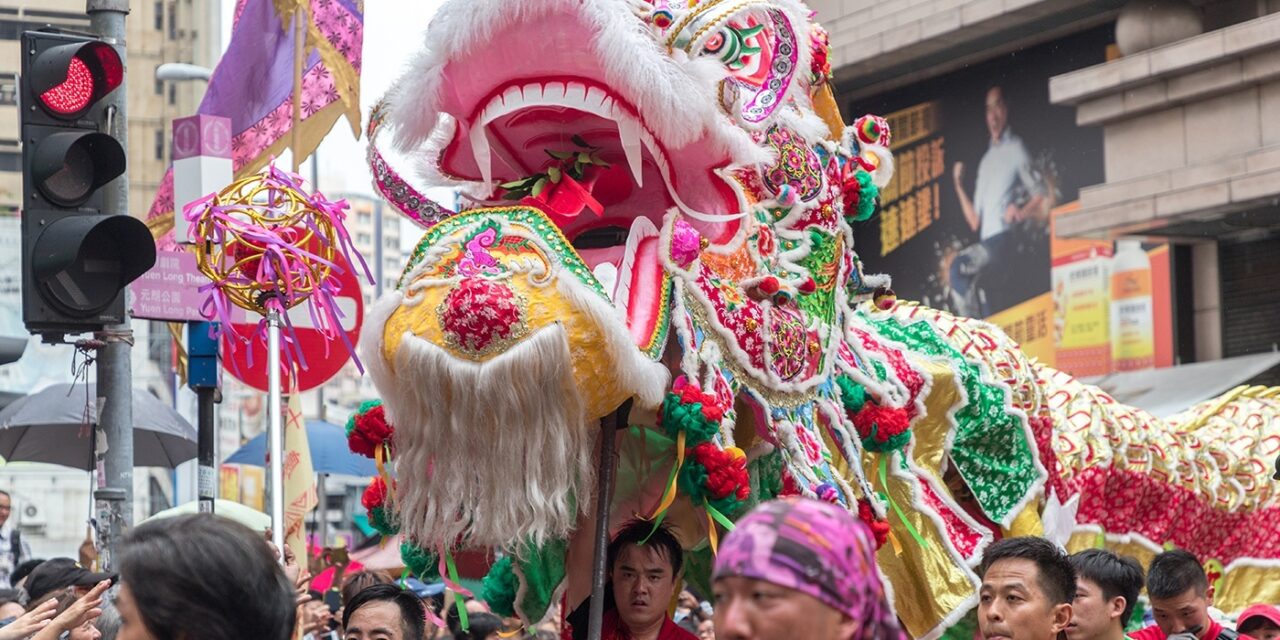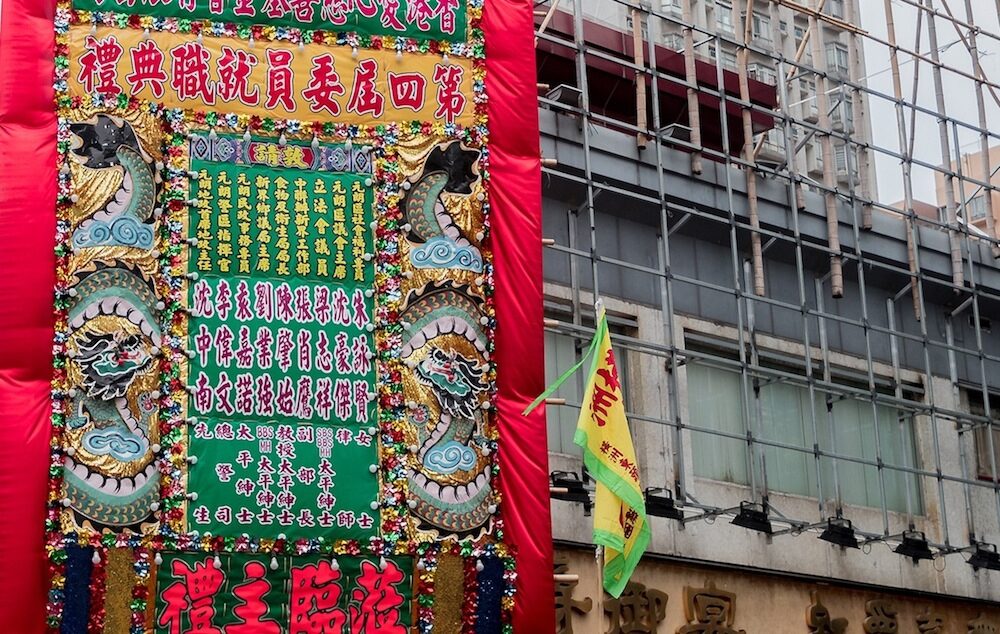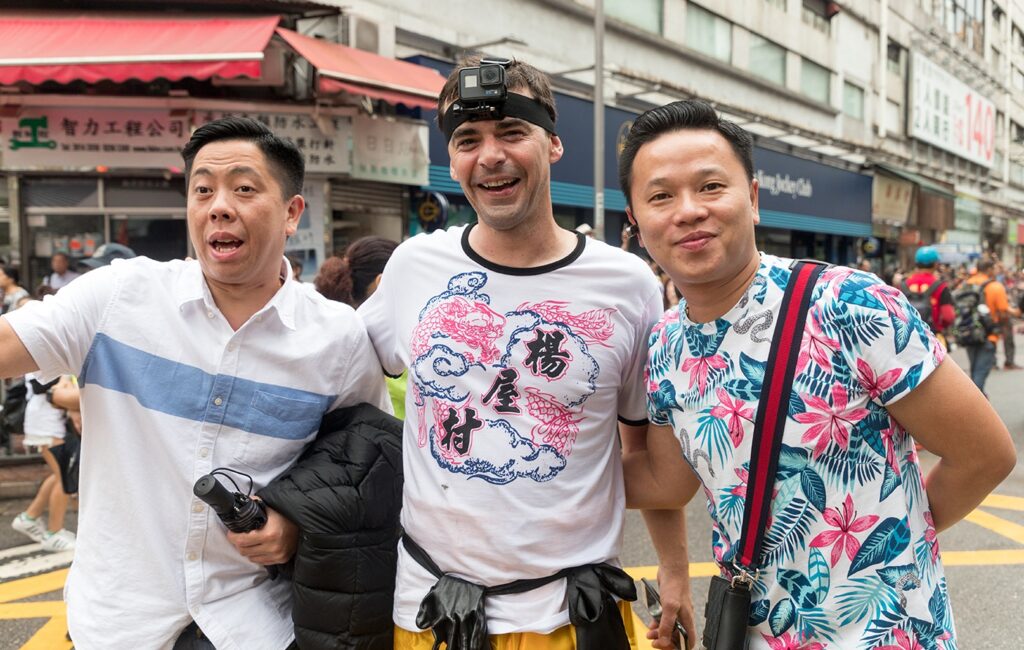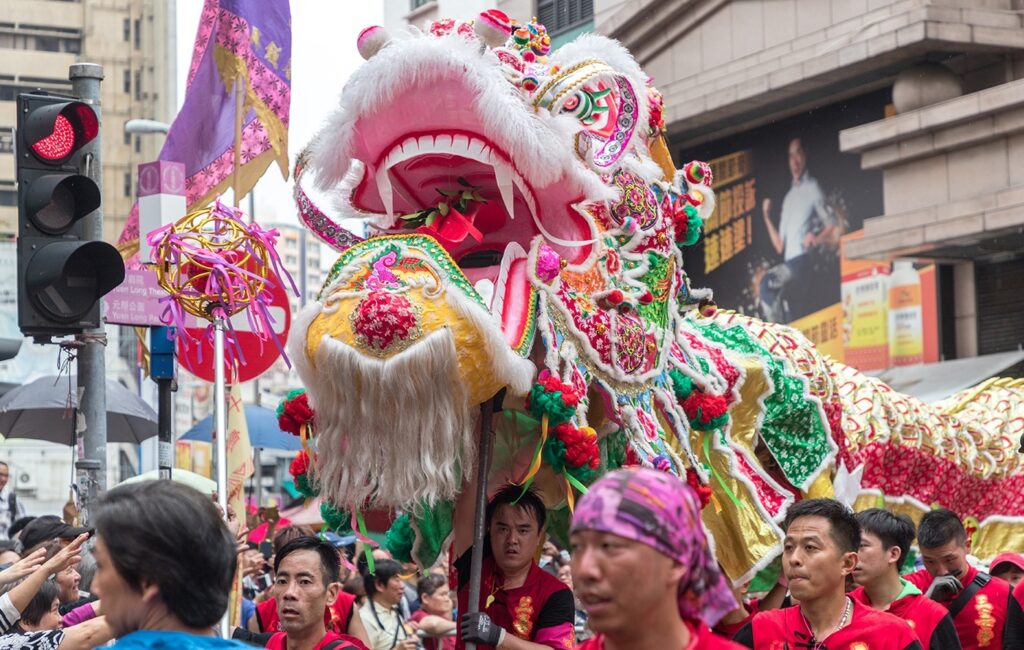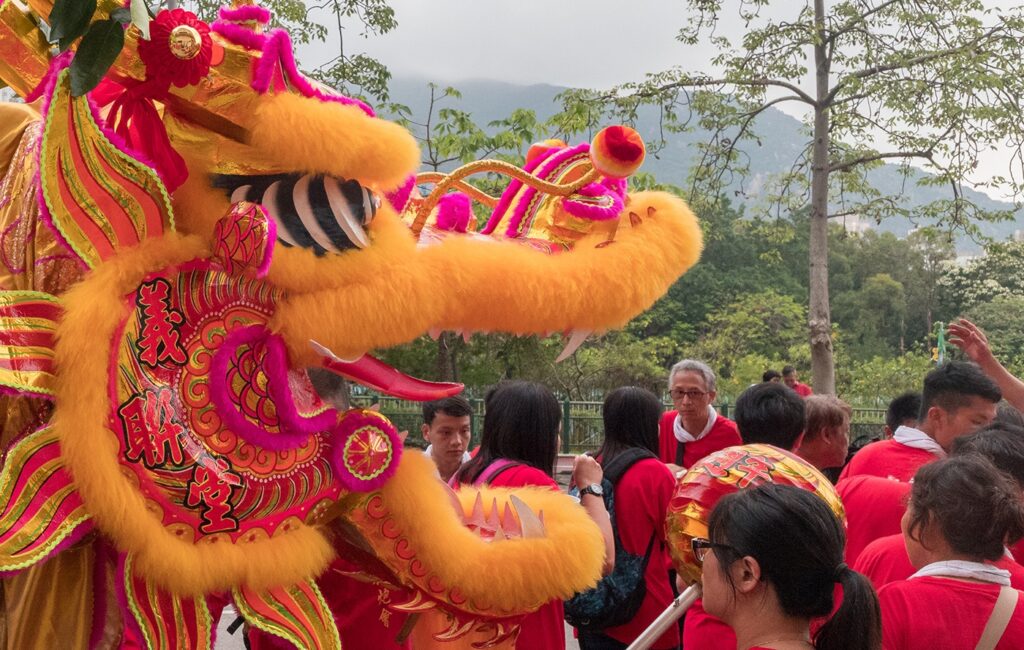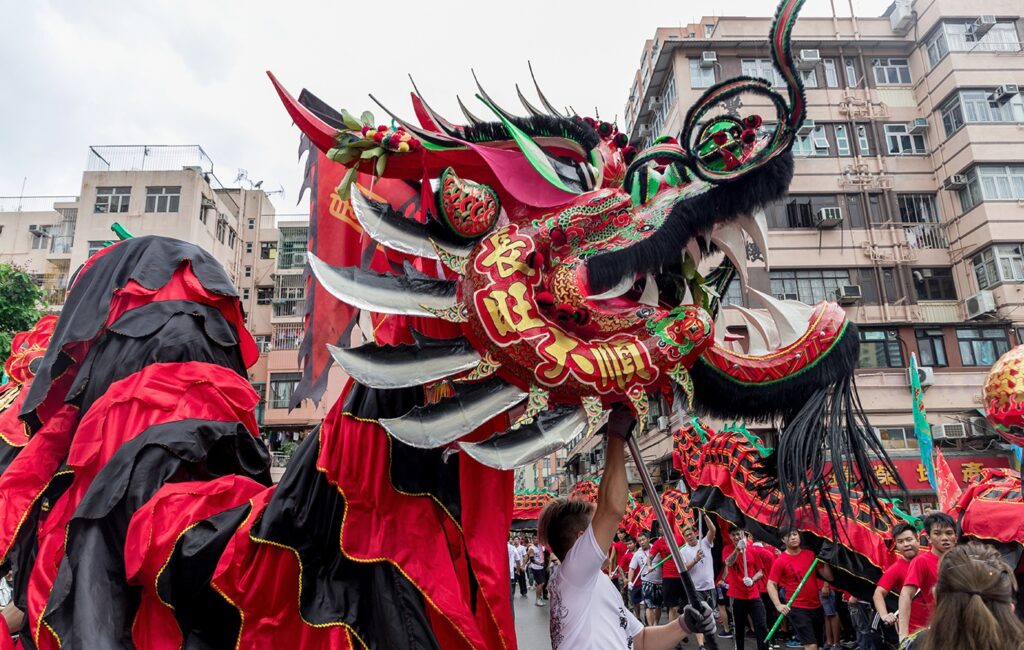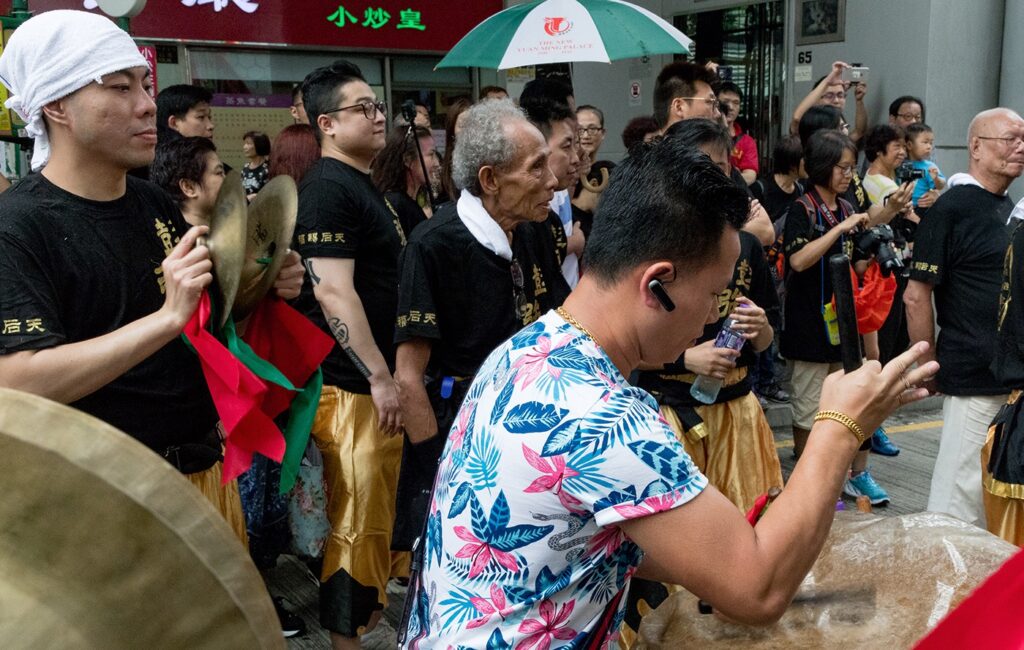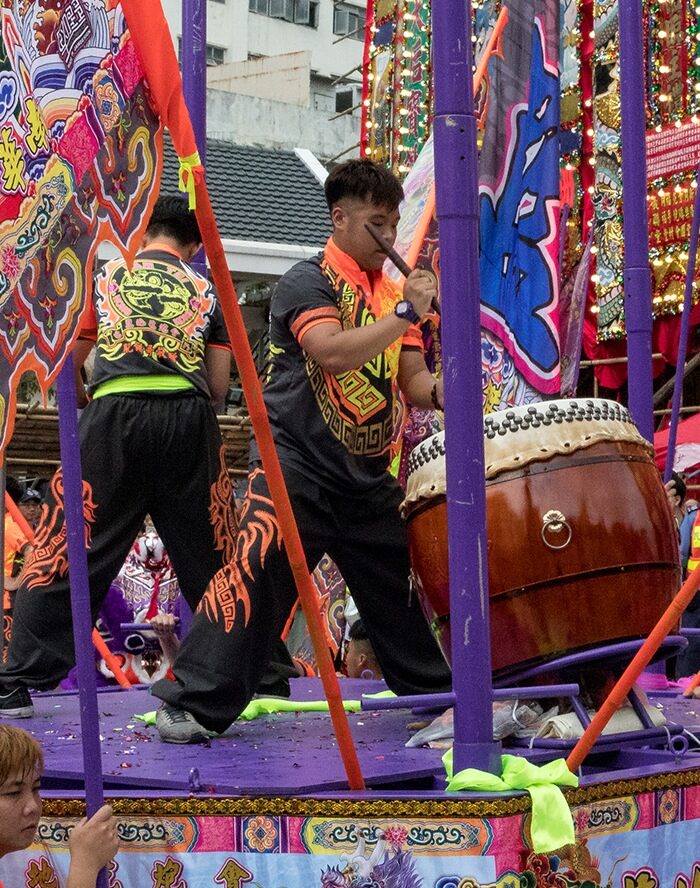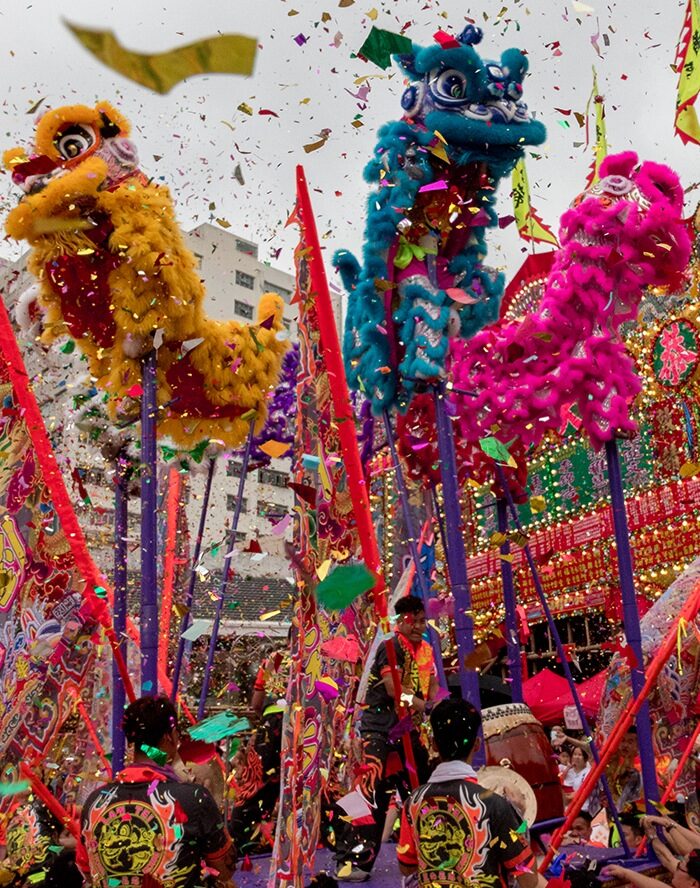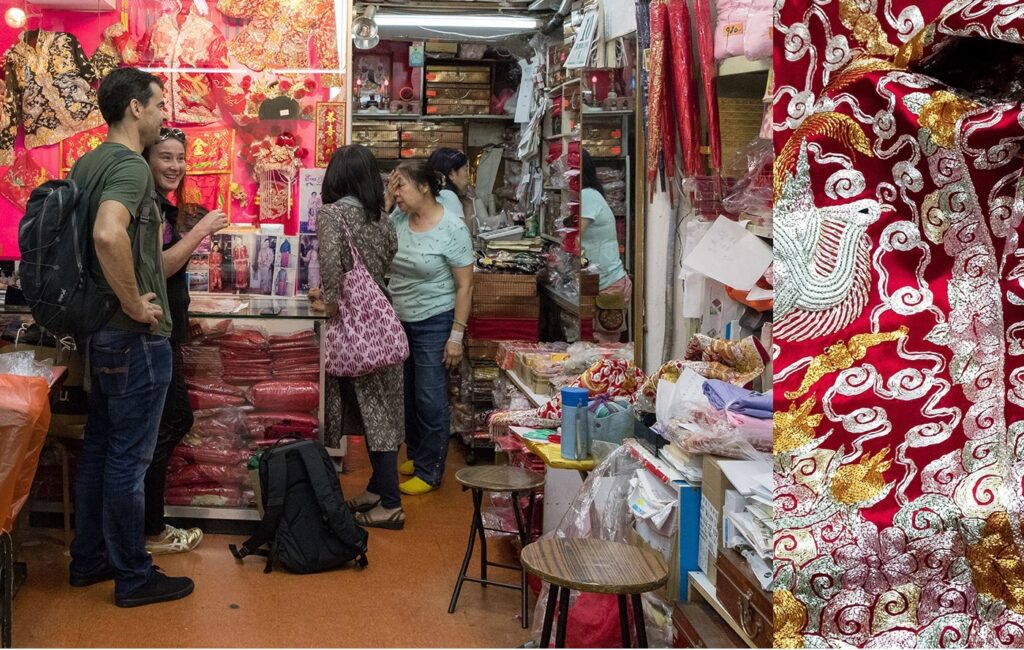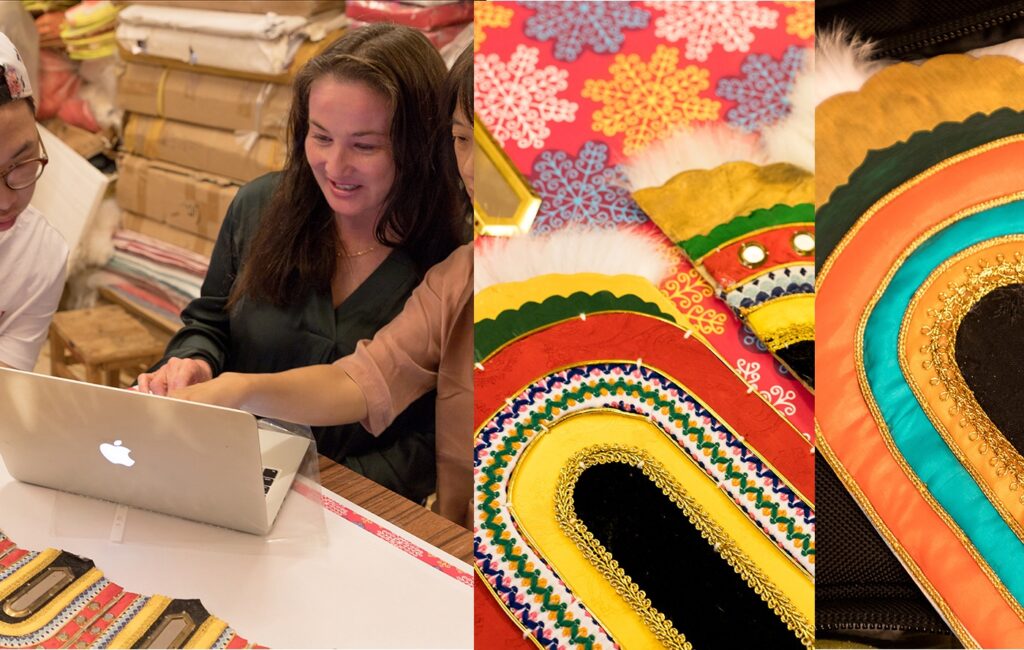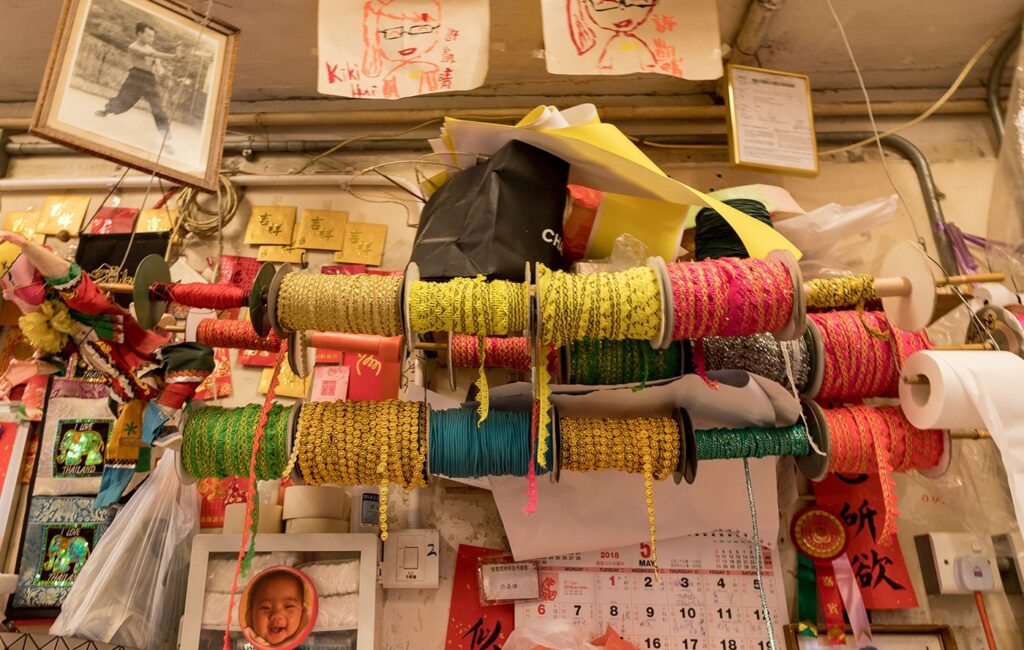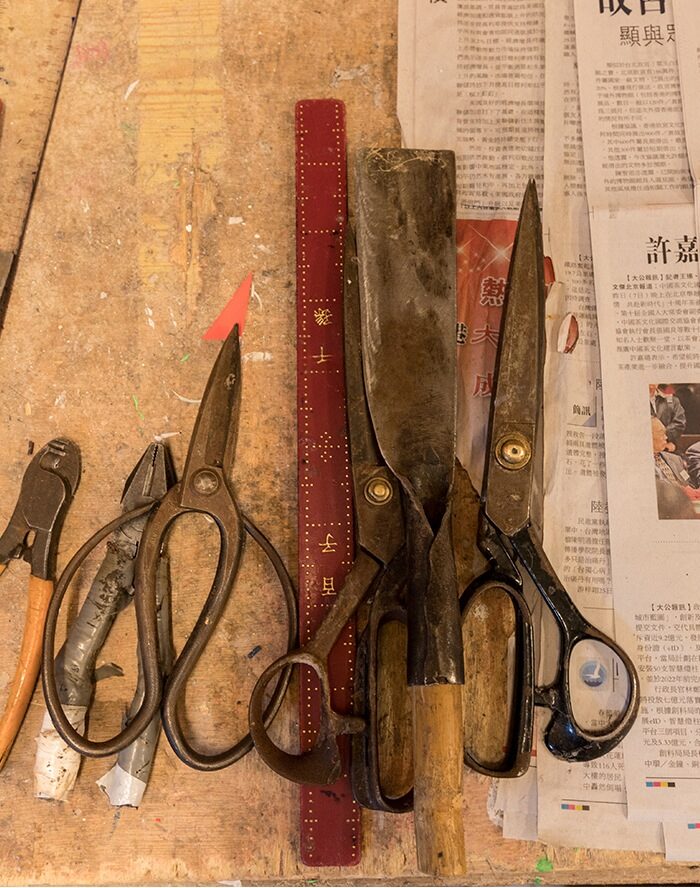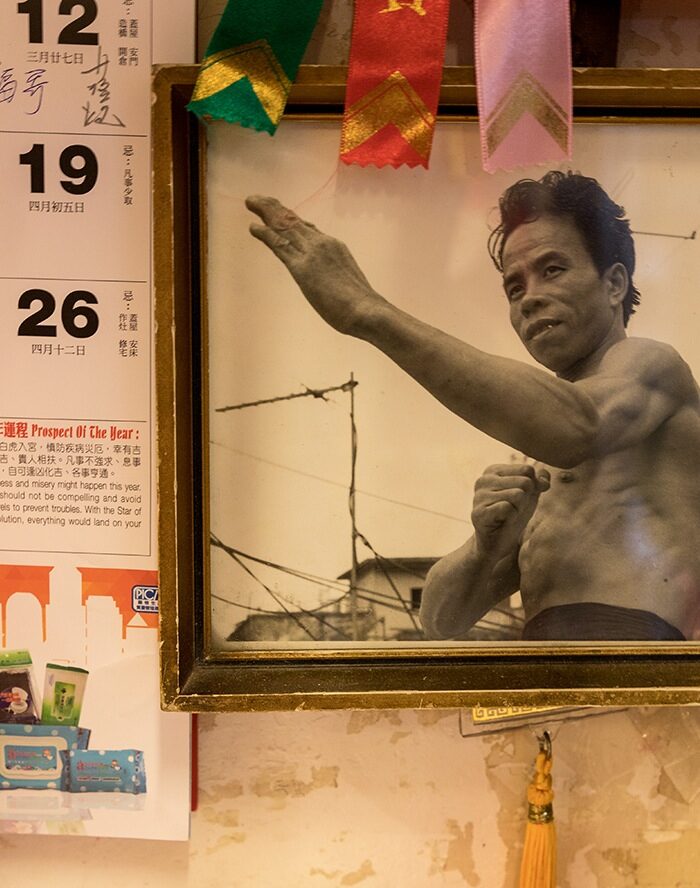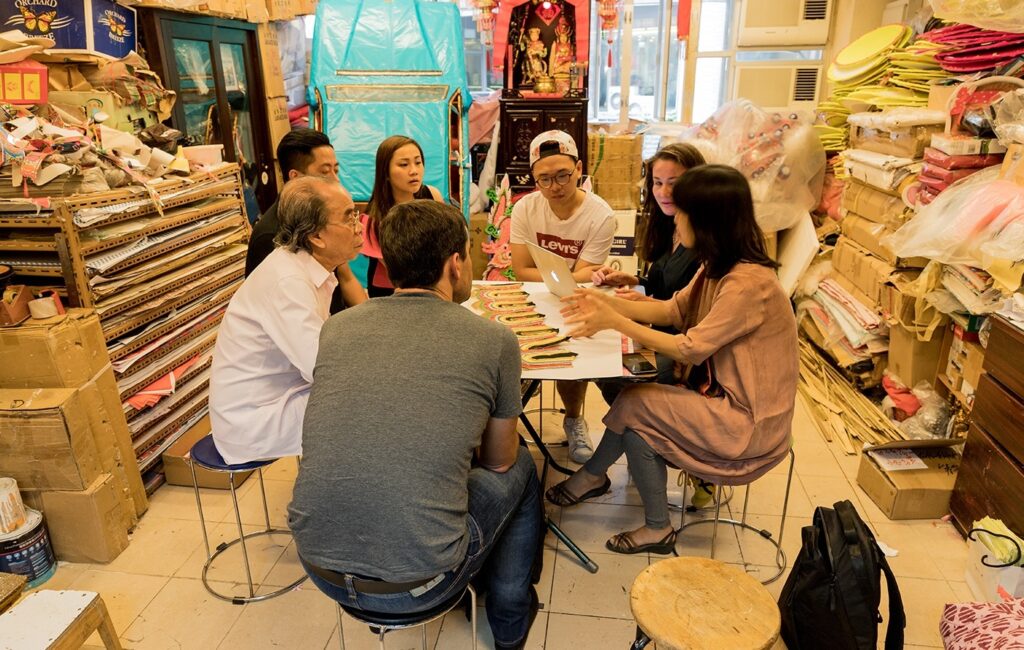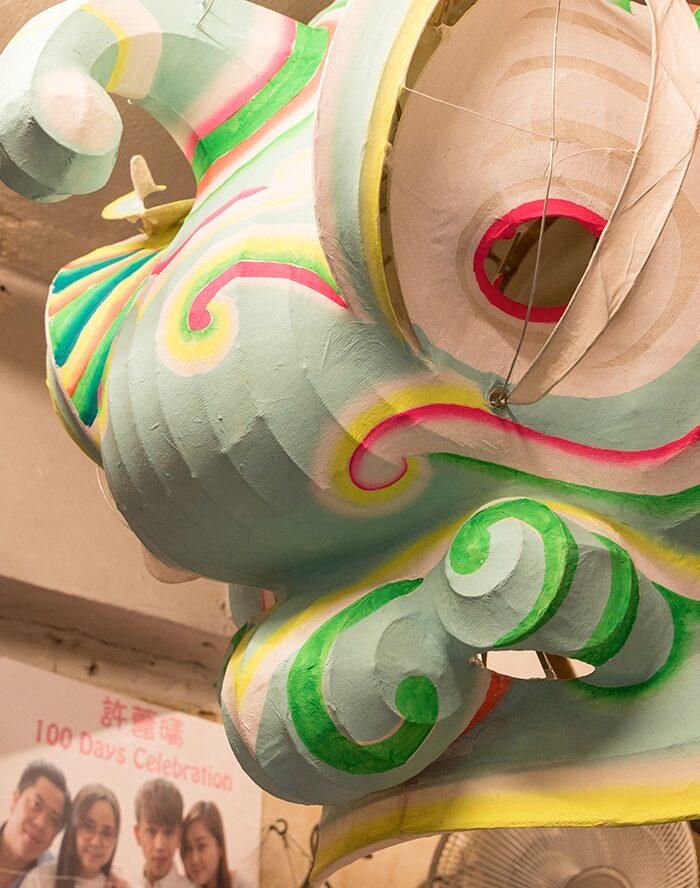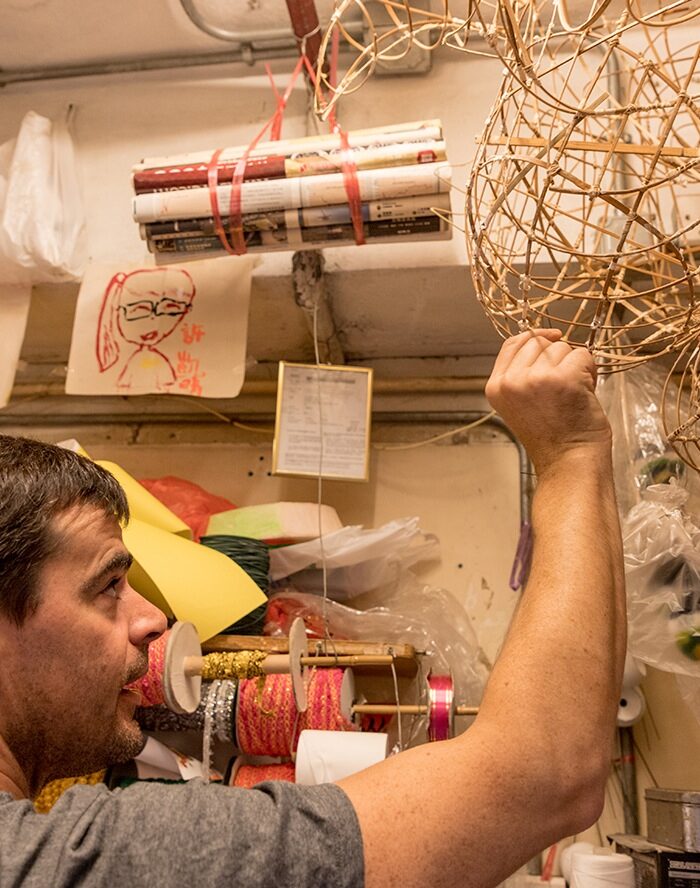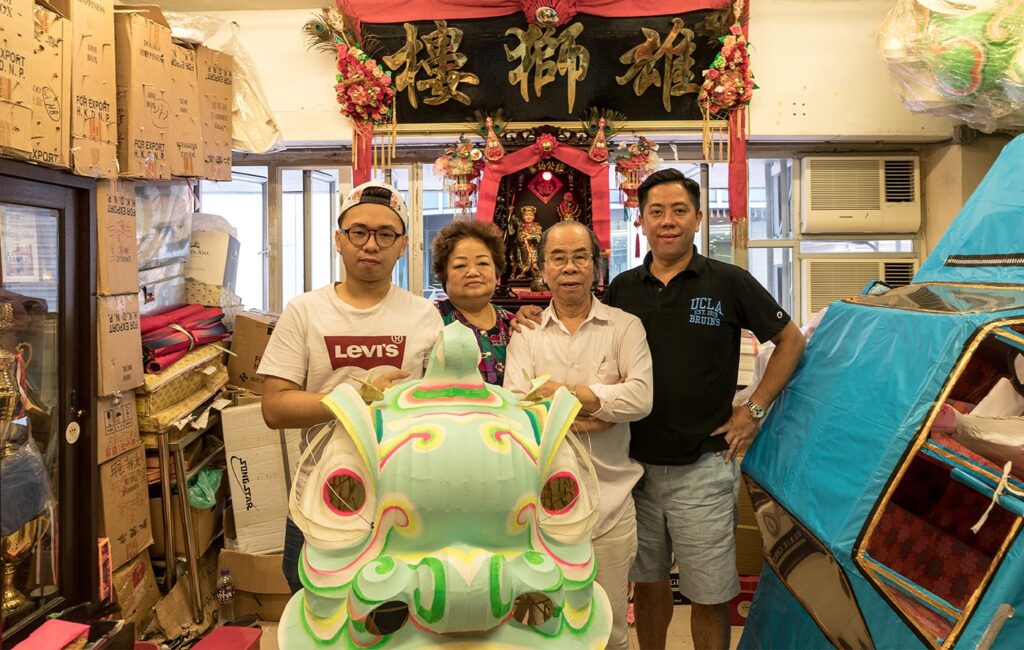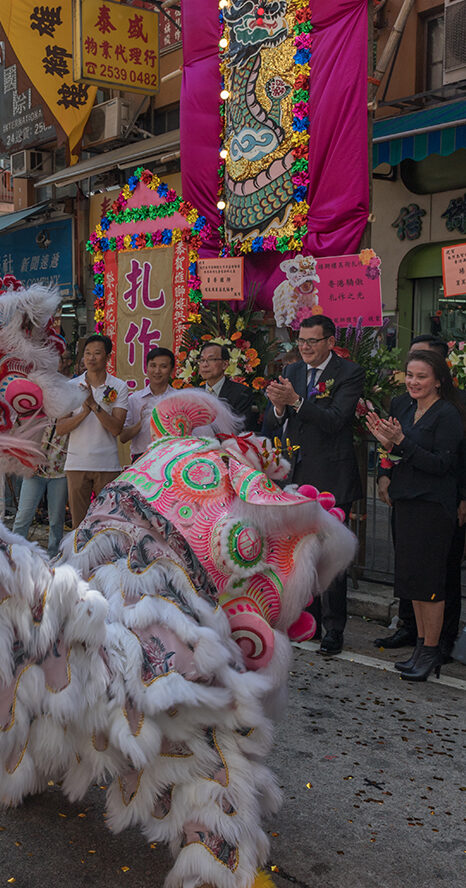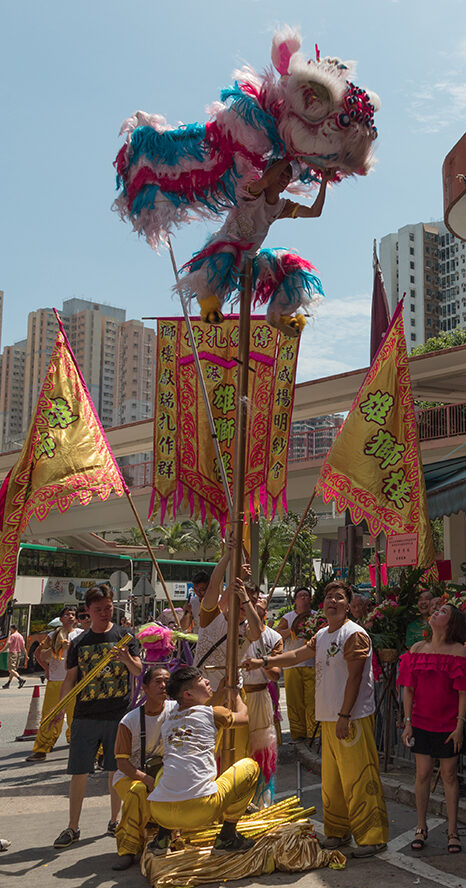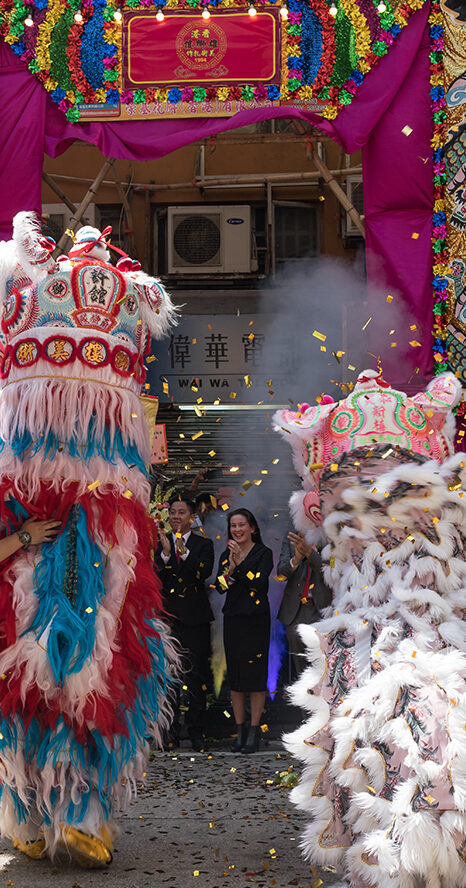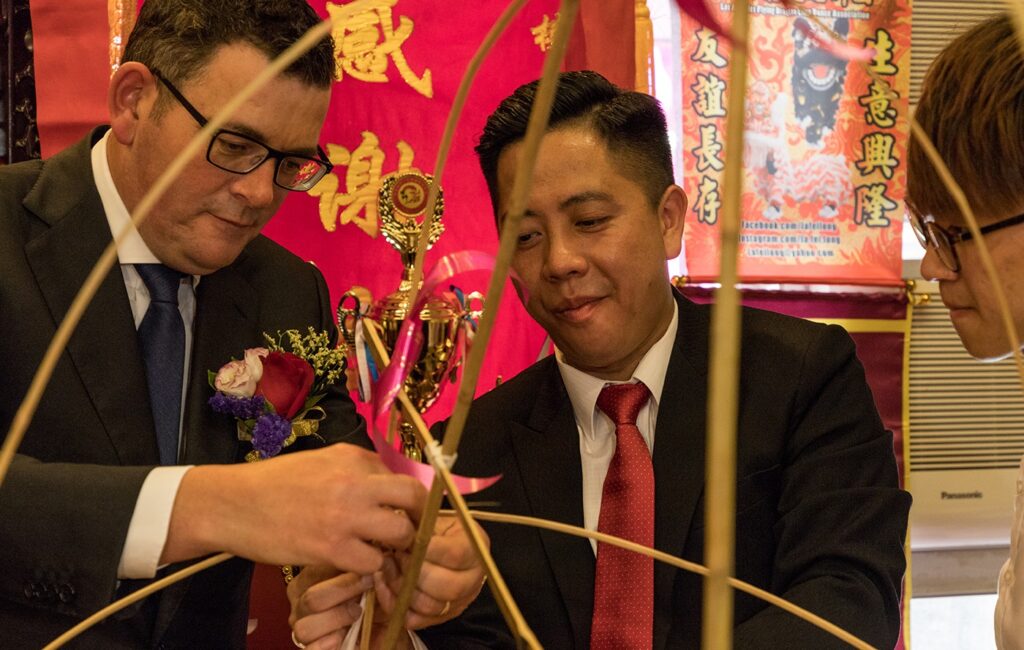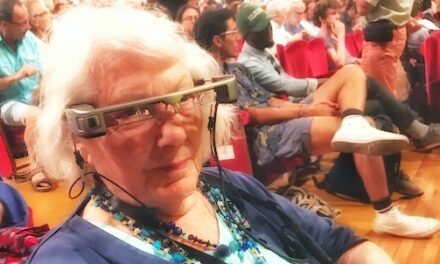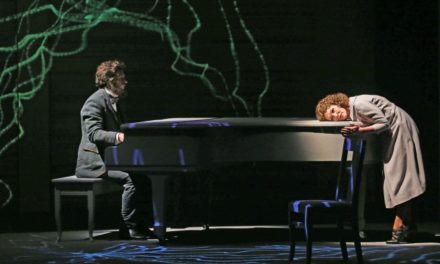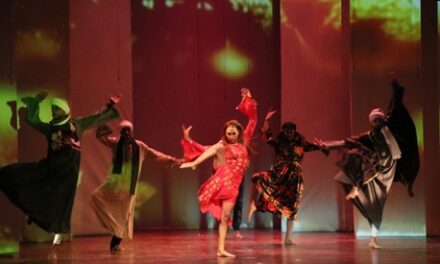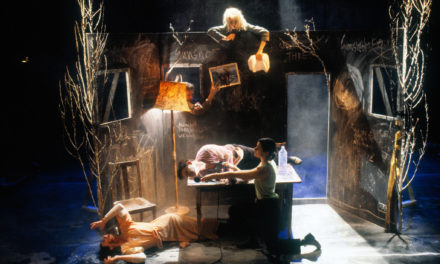For 126 years, the small Australian city of Bendigo has embraced Chinese dragons. This year, their dragon Sun Loong is retiring, and the city is now hunting for a new craftsman who can build their third dragon, Dai Gum Loong. A long search has brought Anita Jack, general manager of the Golden Dragon Museum and Dan Beck, vice president of the museum, to Hong Kong. Their quest has finally yielded a suitable candidate: Master Hui Ka-Hung of the Hung C Lau (雄獅摟) workshop.
Tin Hau’s birthday is a raucous festival that attracts mythical creatures of all shapes: acrobatic lions, lithe qilins and, of course, dragons. It is natural that we should first encounter Master Hui here, in his element, amongst the beautiful fa pau floats and majestic dragons.
Skies may be grey but the rain-soaked streets of Yuen Long are vibrant with enormous faa1 paai4 (花牌, “flower banners”).
We meet Hui (left) for the first time at the Tin Hau Festival in Yuen Long. Hui and his brother pose with Dan Beck (center), a keen lion dancer, as he prepares to take part in the festivities.
Hui is in his element amongst dragons of all shapes and descriptions – some fierce and some flat out cute with their smiling faces and fuzzy whiskers.
The sheer variety of dragons on parade are an indication of how different Bendigo’s new dragon, Dai Gum Loong could look. It all boils down to the maker’s imagination.
“What does a dragon really look like?” asks Hui. “Nobody can really know. They’re interpretations of an emperor’s dream.”
Hui points out a particularly fearsome dragon with vicious teeth and an imposing mien – he is the embodiment of Brother Kwan (Gwaan1 Gung1 關公), patron saint of policemen and triads alike.
Lions and all forms of martial arts performers also crowd the streets, each team vying for the loudest applause for their athleticism, acrobatic grace and for the beauty of their mythical beasts. Troupes of face-painted children add to the festive atmosphere with their raucous beating of gongs and drums.
Anita Jack is on the lookout for fine embroidered pennants and parasols. Jack takes note of maker’s marks in the hopes of recreating the finely embroidered Qing style pennants from her museum’s collection.
Hui, his brother and nephew are all deeply involved in all aspects of lion dancing from making to performing. They each take to the drums, beating out rapid-fire staccato beats to accompany their team who are on their way to pay their respects at Tuen Mun’s Tin Hau Temple.
At the Tin Hau Temple, lions perform acrobatic feats in honor of the sea goddess. The Golden Dragon Museum contingent is particularly interested in this maneuver which involves climbing atop raised poles – this practice has been banned in Australia because of the inherent danger.
The Bendigonians visit various embroidery shops in Mong Kok. These shops specialize in traditional Chinese wedding garb, especially the heavily embellished kua. It is Jack and Beck’s hope that the embroidery employed in traditional wedding garb can be applied to the costumes and pennants which will accompany Dai Gum Loong.
At the Hui’s Shau Kei Wan workshop, we examine a row of scales from Bendigo’s second dragon, Sun Loong. These scales will be left in Hong Kong as samples for Hui to work off. Hui estimates that his family of 10 will be able to create 10 to 20 scales per day. Dai Gum Loong will require 7,000 such scales.
A sample dragon scale (right), made by Master Ringo Leung (another contender for the Dai Gum Loong contract), lays alongside Sun Loong’s scales (center). A single scale like this would have taken both Master Hui and Master Leung a full day to make.
Hui’s 19-year-old nephew, Hui Siu-kei (left), who is a master craftsman in his own right, goes over a draft contract which will formalize their agreement with the Golden Dragon Museum.
Hui’s workshop is small but replete with all the tools and trimmings that a paper craftsman needs to create his art.
Hui’s father, Hui Cheung-zun (right), was an expert martial artist and businessman who immersed his son in the culture of lion and dragon dancing. After retiring he followed his son into the business.
Three generations of Huis go through the finer points of logistics, company incorporation and insurance with Dan Beck and Anita Jack, via their Hong Kong coordinator, Heidi Yeung, in the knowledge that they are about to take on a gargantuan task. Creating a dragon for Bendigo is an honor and a once in a lifetime opportunity.
The lion heads which the Huis create are world famous. They are widely regarded to be of the highest quality and can be found in every country where the Chinese diaspora has spread.
Dan Beck inspects the skeletal frame of a lion. “A real master planes the two inside edges of the cane, which gives the structure strength,” he says. Details such as these separate true masters from rank amateurs.
Three generations of Huis, honored to receive the opportunity to create Bendigo’s next dragon and confident in their ability to fulfill this important contract.
Finally, the day of the contract signing comes and it comes with much fanfare. The Huis erect a giant fa pai on the side of their building and traffic is rerouted as the family receives Anita Jack. Jack and Hui sign the contract, sealing their agreement, as the Premier of Victoria, the Hon. Daniel Andrews looks on.
This article was written by Billy Potts for Zolima CityMag on May 30, 2018, and has been reposted with permission.
This post was written by the author in their personal capacity.The opinions expressed in this article are the author’s own and do not reflect the view of The Theatre Times, their staff or collaborators.
This post was written by Billy Potts.
The views expressed here belong to the author and do not necessarily reflect our views and opinions.

